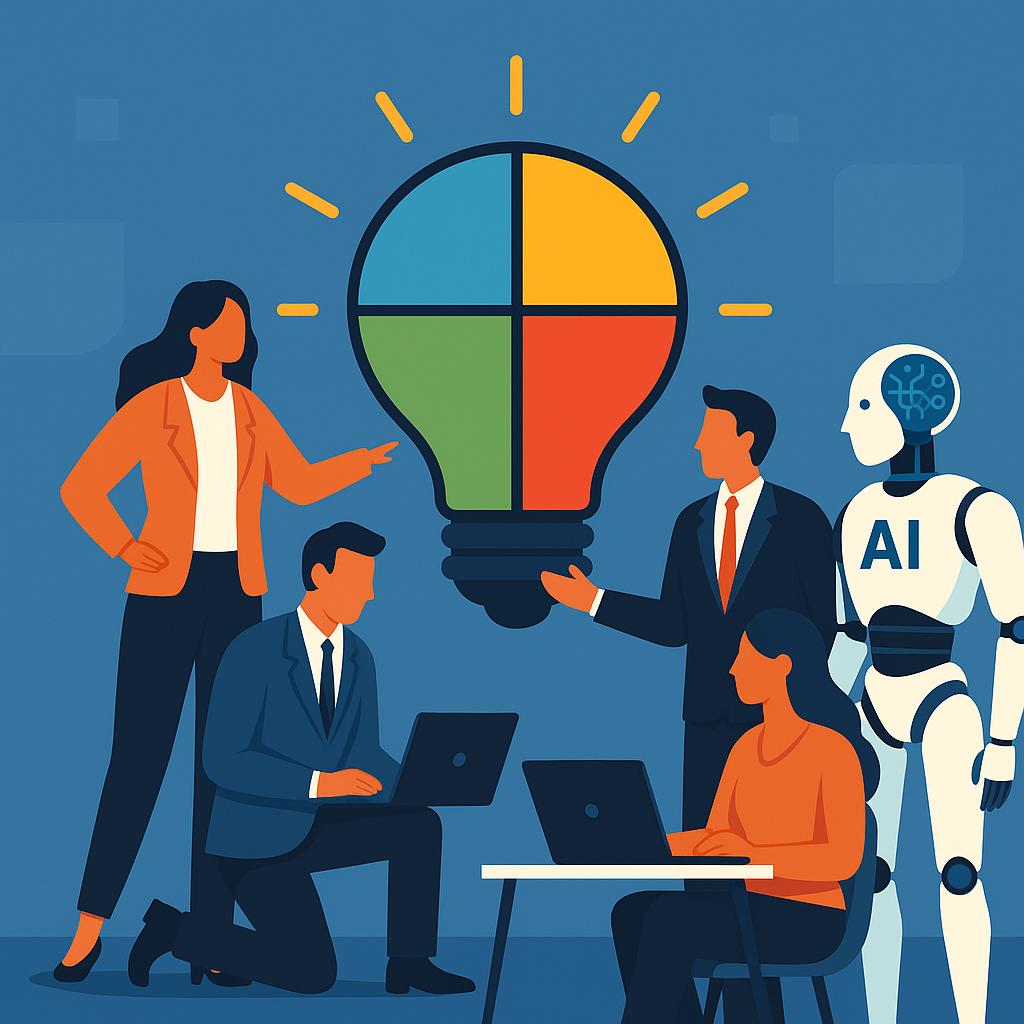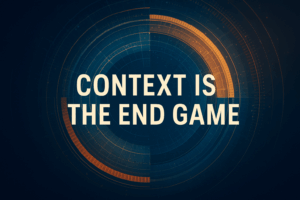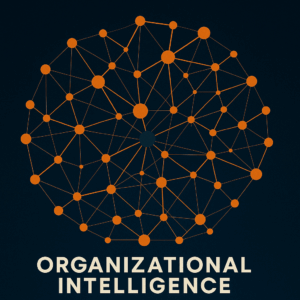AI Won’t Replace Your Leadership Team. It Will Transform It.
Summary Insight:
AI won’t replace your leadership team—it will become part of it. This article shows CEOs how to redesign their organizational structure around a Strategic Execution Team (SET) to integrate AI intentionally and scale without chaos.
Key Takeaways:
- The SET model turns AI from a threat into an ally by embedding it across strategy, execution, and tactics.
- AI adoption must align with your company’s lifecycle stage—Pilot It, Nail It, Scale It, or Milk It—to prevent entropy.
- Structure, not tools, is what ensures AI-human collaboration enhances velocity, clarity, and results.
There’s a lot of noise about AI taking over jobs, departments, even entire companies.
But the CEOs I work with aren’t asking whether AI will replace people.
They’re asking:
How should we restructure our leadership and execution teams to harness the real capabilities of AI?
That’s the right question.
And the answer lies in designing an Organizational Physics structure that naturally supports AI-human collaboration as your business scales.
At the center of that structure is the Strategic Execution Team (SET).
Why AI Demands a New Approach to Structure
AI changes what’s possible.
But it also changes where complexity lives in an organization:
- Tasks once handled by individual contributors can now be managed or supported by AI agents.
- Information flows that were once human bottlenecks can now be automated or accelerated.
- Decision-making at the tactical and execution levels can be enhanced or even delegated to AI agents.
That sounds promising — but it also introduces a new kind of entropy:
- Shadow processes emerge.
- Teams duplicate efforts without realizing it.
- Responsibility for AI-driven outcomes becomes murky.
- Leaders can’t see or manage how human and AI energies are flowing (or not flowing).
The traditional functional structure — Marketing, Sales, Operations, etc., each managing their own patch — can’t handle this new complexity.
It multiplies entropy and slows down the organization right when speed and clarity are most needed.
The SET Team: AI’s Natural Counterbalance
The Strategic Execution Team (SET) model — as used by growth companies like Aldevron, FostrAI, Yoco, TransferGo, and Sounds True — was built for exactly this kind of environment (organizationalphysics.com/success-stories/case-studies/)
Your SET is a larger, cross-functional leadership team that holds decision rights over the company’s top-level OKRs.
Its job:
- Translate strategy into clear, cross-functional execution priorities.
- Monitor entropy signals across the business.
- Adapt short-range tactics as new challenges or opportunities emerge.
- Manage the connections between people, processes, and now AI agents.
Here’s the key insight for CEOs:
AI won’t replace your SET. It will become part of your SET’s execution layer.
AI will:
- Provide data and insights to inform strategic decisions.
- Automate execution tasks.
- Free human team members to focus on directional energy and creative problem-solving.
But it’s your SET that ensures AI amplifies integration rather than entropy.
A New AI-Ready Structure: The SET-Centered Model
Here’s how to structure an AI-enabled organization using the Organizational Physics SET model:
| Layer | Human Role | AI Role | Organizational Physics Principle |
| Strategy (SET) | Vision, alignment, OKR ownership, structure adaptation | Data analysis, trend detection, scenario modeling | Directional energy; low entropy |
| Execution (Functional Leaders / Teams) | Project management, creative decision-making, cross-functional collaboration | Process automation, reporting, recommendation generation | Productive energy; adaptive flow |
| Tactical (Staff / Agents) | Exception handling, customer empathy, complex task oversight | Task automation, first-draft creation, data handling | Maintenance energy; minimized entropy |
Your SET must own the integration of AI into all three layers — deliberately, not reactively.
Lifecycle Alignment: Don’t Scale AI Chaos
A second core principle from Designed to Scale:
Structure must align with the lifecycle stage.
If you’re in:
- Pilot It — Experiment with AI agents. Your SET monitors entropy signals and learns where AI can truly add value.
- Nail It — Codify successful AI-human workflows. Your SET adapts roles, decision rights, and OKRs to reflect this new reality.
- Scale It — Roll out proven workflows. Your SET focuses on energy flow, keeping entropy in check as complexity increases.
- Milk It — Optimize. Your SET steers the organization toward efficiency while scanning for disruptive opportunities.
Trying to “Scale It” before you’ve “Nailed It” — especially with AI processes — guarantees failure.
That’s why every successful AI transformation I’ve seen starts small, validates, and only then scales with SET oversight.
The CEO’s Role in an AI-Enabled Structure
Here’s where most CEOs get it wrong.
They try to appoint a Chief AI Officer or launch isolated AI initiatives without adapting the structure of the business.
That’s like adding a jet engine to a sailboat without re-aligning the steering. You’ll go fast — in the wrong direction, with predictable failure.
Instead:
- Adapt your SET. Ensure it’s cross-functional, AI-literate, and that you’ve removed most competing accountabilities from individual roles.
- Define AI decision rights. Clarify where AI can suggest, where it can decide, and where human judgment remains essential.
- One element of the SET model that is essential for the AI era is how the SET processes Type 1 vs. Type 2 decisions. Type 1 decisions should always go to the humans for decision-making with AI providing data and scenario planning. Type 2 decisions can be delegated directly to AI agents as those capabilities increase.
- Monitor entropy actively. Use entropy signals to spot where AI workflows are introducing complexity or breaking alignment.
- Evolve structure dynamically. As AI capabilities change, so must the organization’s structure — always aligning to lifecycle stage and energy flow.
Final Thought: AI Multiplies Energy. Structure Directs It.
AI is an energy multiplier. It can accelerate productive and maintenance energies dramatically.
But without the right structure — without a Strategic Execution Team that monitors and manages that energy — AI will multiply entropy faster than success.
Your job as CEO is not to pick the best AI tools.
It’s to design and evolve the system that allows AI-human collaboration to thrive as your company scales.
That starts — and stays — with you and your Strategic Execution Team.




